Halloween is known in Ireland as Oíche Shamhna and Samhain marks the first day of winter. The Celts divided the year into two seasons, the light and the dark, at Bealtaine on May 1st and Samhain on November 1st. The days are now growing shorter, but there's lots of activity taking place outdoors and lots of exploring to be done.
Feeding the Birds
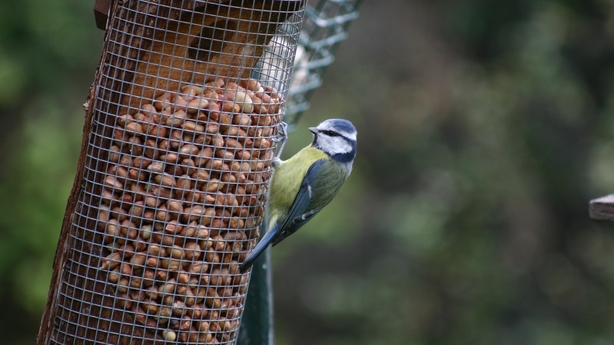
Once Halloween is over I know it’s time to clean off the bird feeders, fill them up and put them out for the winter. Food will soon start to become scarce and it’s a good idea that the birds learn where your feeders are so that they can make the transition easily to the food that you are providing.
A peanut feeder will attract a variety of tits and finches. (If you still have some "monkey nuts" left over from Halloween, why not thread some string through them and hang them up in the garden. Tits are very agile and they give me hours of pleasure watching them).
Be sure NOT to use SALTED peanuts
Foods to Avoid!
* Dessicated coconut should NEVER be used as it will swell up inside the birds and may kill them.
* Avoid highly spiced foods and curry remains.
* If you put out poultry bones for the birds, make sure your cat or dog can’t get at them.
* Avoid potato crisps.
For more information on feeding birds in winter, click here
Berries are supposed to be red or yellow, - aren’t day?
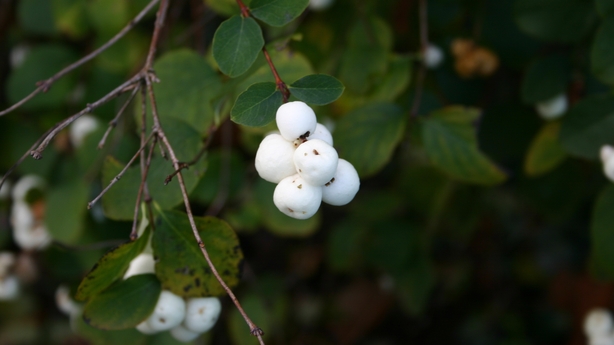
Look along any hedgerow or garden this month and see the masses of plants in berry - hawthorns, cotoneasters, firethorns to mention but a few. But why are the berries red or yellow? To attract the birds. The birds digest the fruit and the seeds pass through the digestive system to be dispersed as far away as possible from the parent plant. But what about a plant that produces white berries!
Snowberry is an introduced shrub, common in woodlands and hedgerows. Small pink flowers form from June to September but now the plant is covered in a mass of white berries. The berries are not very attractive to birds but are eaten by pheasants in hard winters. Keep an eye out for them on your winter walks. As children, we used to collect these berries and squeeze them into unsuspecting ears of others before running away!
Why do leaves change colour before they fall?
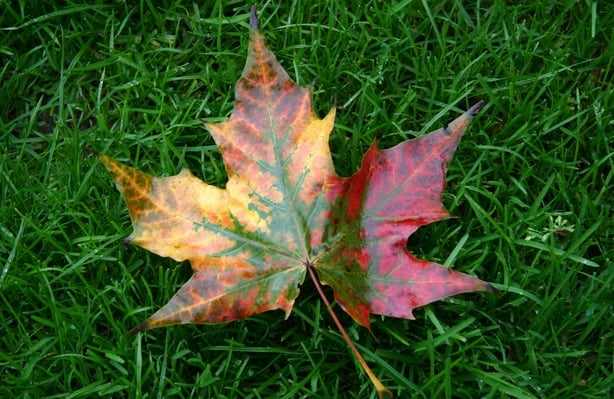
Leaves are falling from the trees now but they’re no longer green. Leaves appear green because they have the green pigment chlorophyll. This is the pigment necessary for photosynthesis (the way plants make food). But plants, and leaves, contain many other pigments that are responsible for colours other than green (red and yellow berries, blue flowers, orange carrots etc.) As temperatures begin to decline, and days begin to shorten in late autumn, the chlorophyll in the leaves begins to break down. The same conditions which lead to chlorophyll breakdown, also lead to increases in the other pigments (e.g. the reds and yellows). The leaves are therefore losing the green colour as the yellow and red colours are increasing. The most dramatic show of colours is therefore seen in those years where there is a well-defined shift away from warm summer temperatures, to cool autumn temperatures. These conditions speed the breakdown of chlorophyll, and increase the productions of anthocyanins (red pigment) and carotenoids (orange pigment), to produce bright clear colours. While early cool temperatures bring about the best colours, an early frost can diminish the show of fall colours as it kills the leaves outright, before the gradual shift in colour can develop.
Where are my hedgehogs gone?
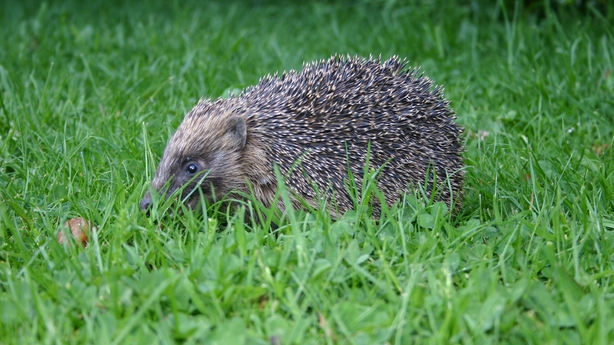
This summer I have seen more hedgehogs in West County Dublin than ever before. Regularly we have had 4 or 5 a night in the garden feeding. The record was 7, one night in July. Lately only one or two are visiting, despite the fact that I’m still leaving out food for them.
The answer, of course, is that they are starting to hibernate, to sleep away the cold winter while the rest of us must continue on as usual. However, you might come across a small young hedgehog in your garden or on the road. What should you do? The following is a simple rule of thumb:
Any hedgehog that has not reached 600 grams when the weather turns very cold will not have the fat reserves to survive hibernation, and will have to be kept indoors throughout the winter
For more information on hedgehog hibernation click here
Giving Birth for Christmas:
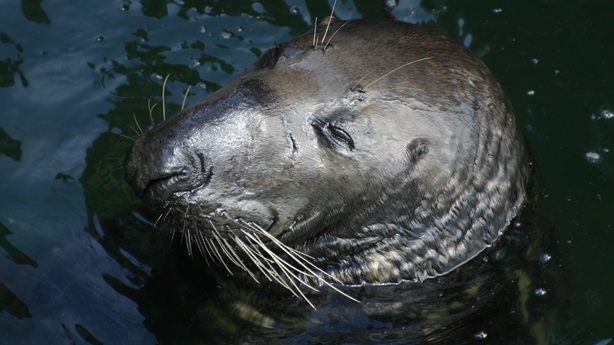
Most animals give birth during the summer time when there is good weather and an abundance of food. Not so the Grey Seal. At this time of year we are well into the pupping season of the Grey or Atlantic Seal. Seals congregrate at traditional sites to breed, e.g. the Blasket Islands, the Saltees and Lambay Island. Grey seal pups have beautiful white fur for the first 3 weeks or so, which they gradually lose taking on the distinctive colour pattern of the adult. They are fed on milk by the mother (the richest milk in the animal kingdom), gaining about 2 Kgs. per day. They will more than triple their weight during their first 3 weeks of life! This weight gain consists mainly of a layer of blubber below the skin, which is vital insulation for when they go to sea.
There’s a Spider in my Bath!
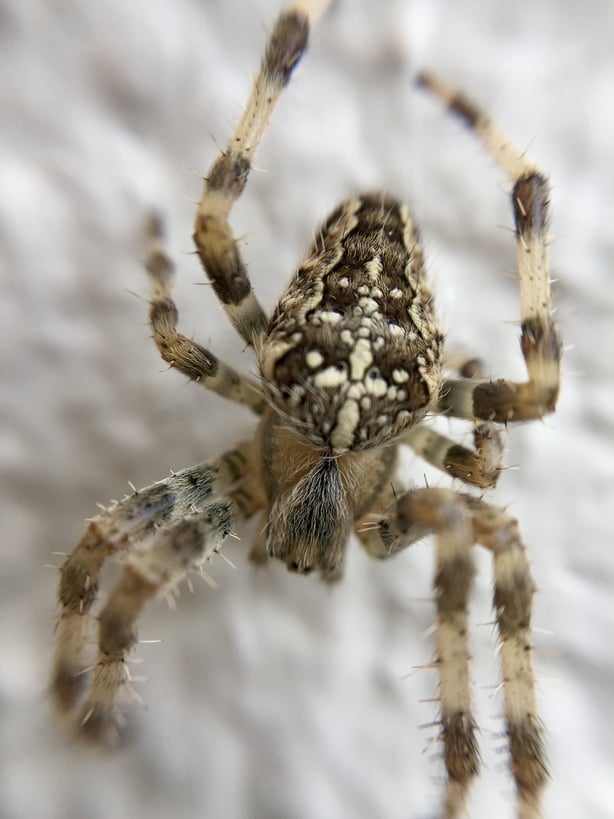
It’s that time of year again, when for some unknown reason, our bath becomes home for some HUGE spiders. Cold temperatures bring them indoors. However, we need not worry. It is not the large spider species that bite. So if you see a monster in your bath or sink, capture him in an old glass and put him where he belongs - back out in the garden.
Do any plants flower in November?
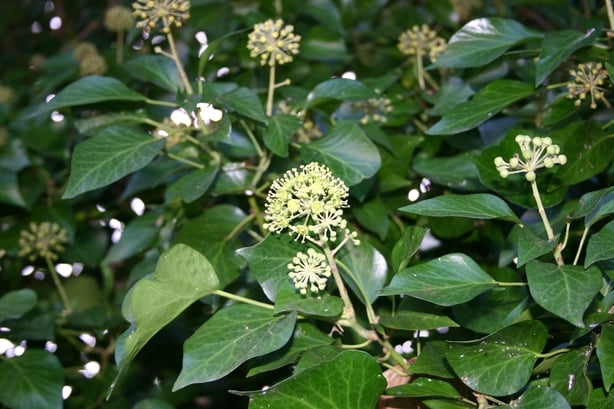
Most flowering plants have finished reproducing (flowers are the reproductive parts of the plant) for this year and are taking a well earned rest. However, there is one that is only just beginning. Ivy, that common hedgerow, woodland and garden plant is now just coming into flower. Beautiful ball-like yellow flowers adorn the tops of the ivy shoots. But why so late in the year? Because when the plant produces berries (next February or March) it will provide a source of food for the birds when there is little else, ensuring that the ivy plant is gaurenteed to have it’s seeds dispersed. Clever oul’ ivy!
Why is there tar spots on my sycamore tree leaves?
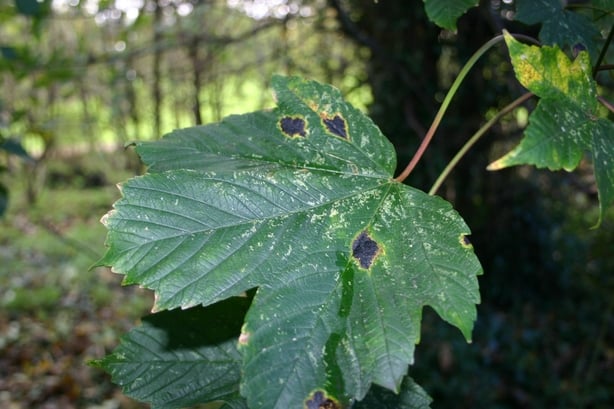
Well, it's not really tar, although it looks very like it. In fact, the leaves are suffering from a fungal infection and because it looks so like tar spots, it is commonly called Tar Spot Fungus, or to give it it's correct name, Rhytisma acerinum. The infection causes a black spot surrounded by a yellow ring and can be seen on leaves of sycamore at the moment. If your sycamore or maple tree is showing signs of this fungal infection, there's no real cause for worry as it won't do any serious damage to your tree. As the fungus survives the winter on the fallen leaves, it's best that you remove any fallen leaves from your lawn to reduce the chances of next year's foliage becoming infected.
Oh! And by the way, Tar Spot infection is most common in places where there is NO atmospheric pollution, so like the lichens, it is an indicator of good clean air.
